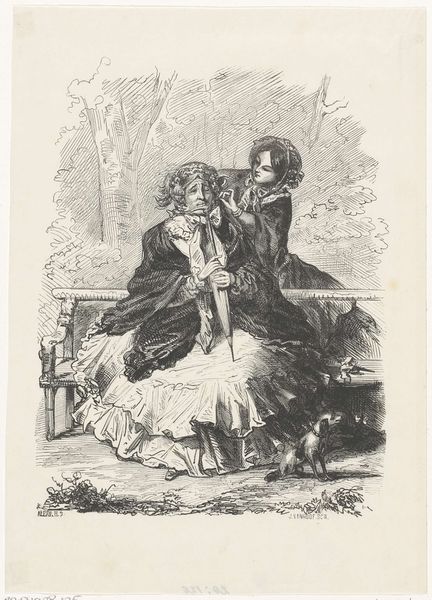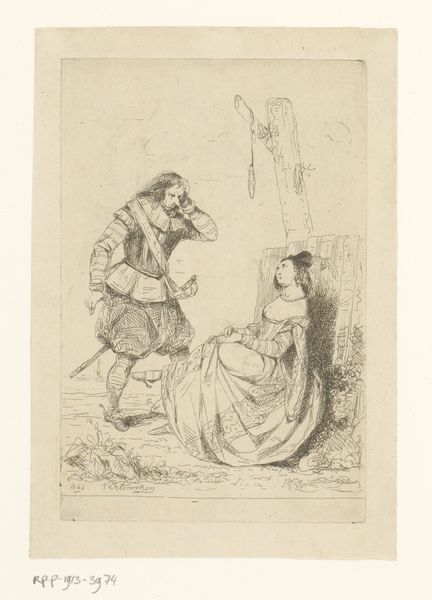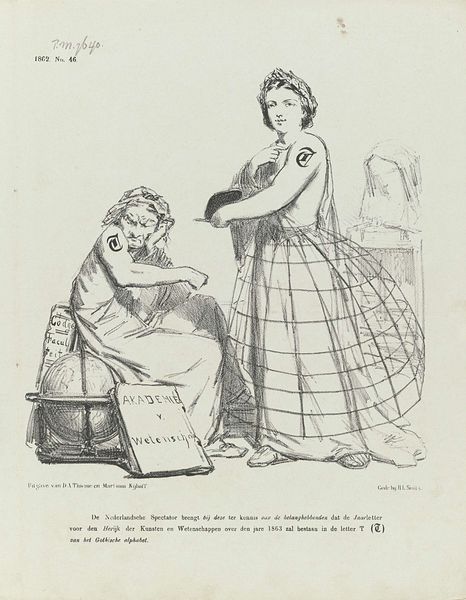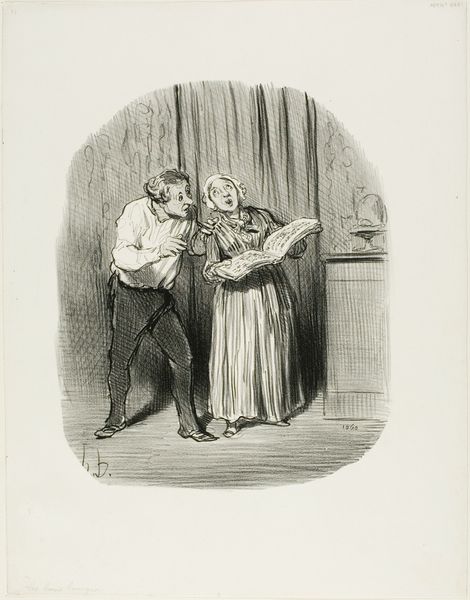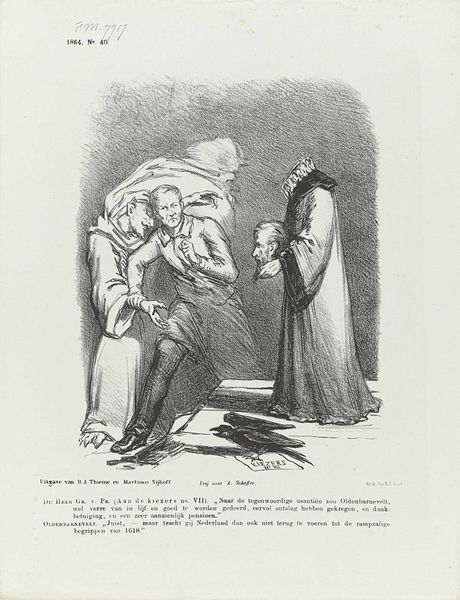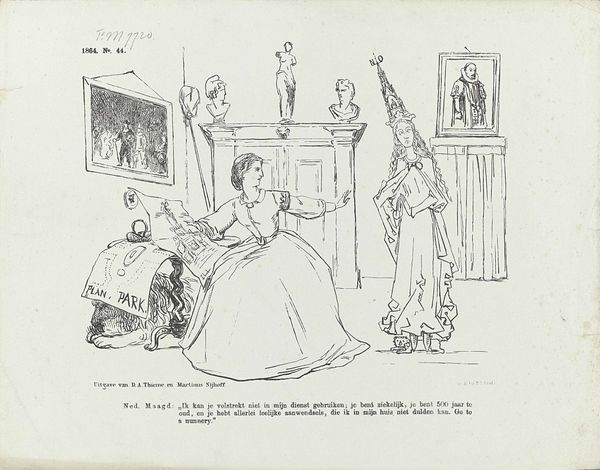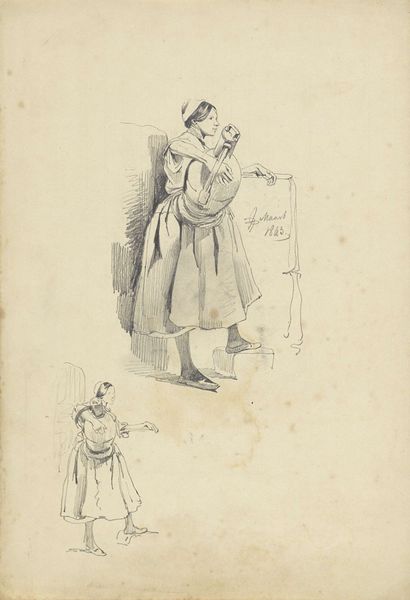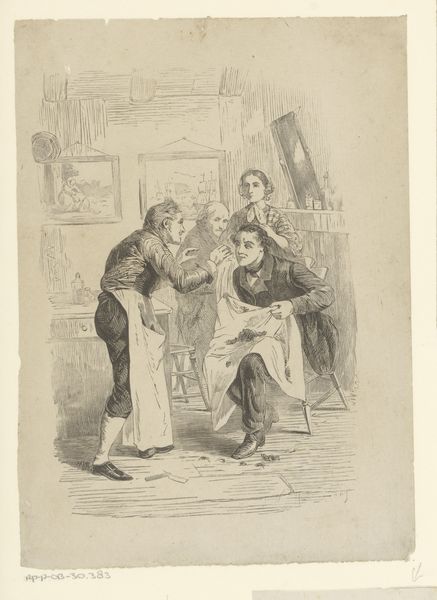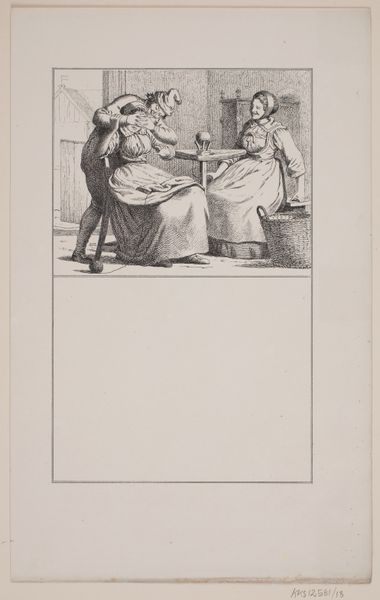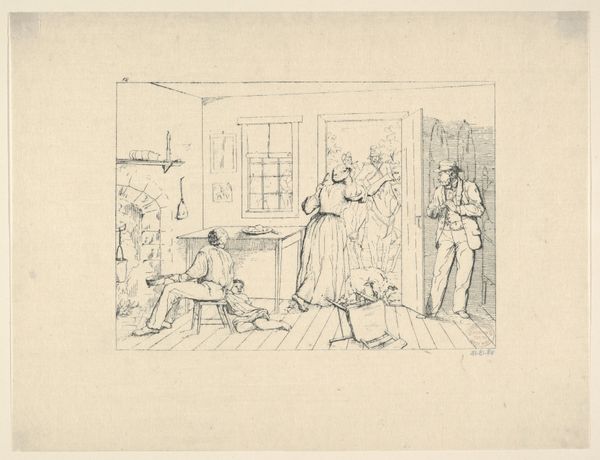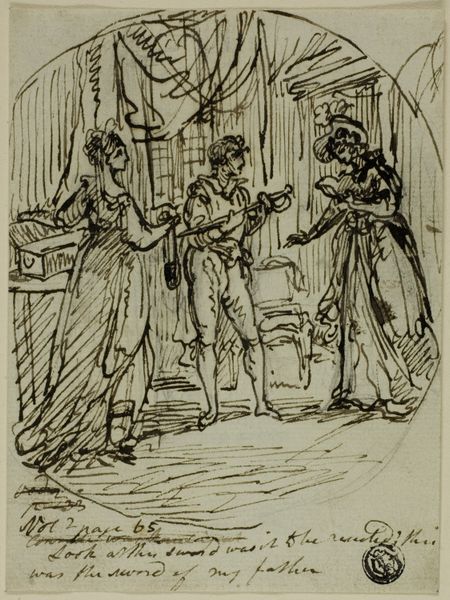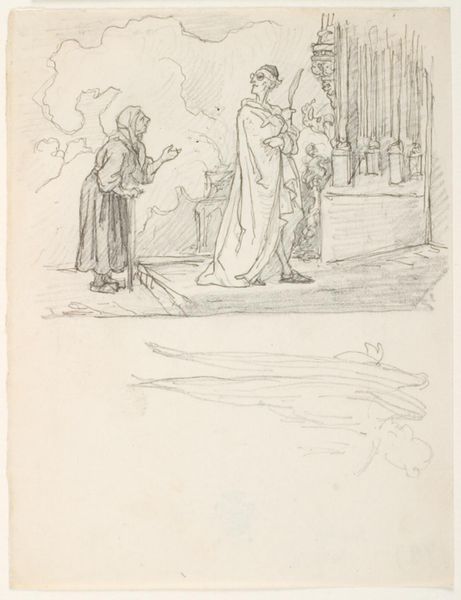
Spotprent op publicatie van H.J. Schimmels roman in De Gids, 1863 1863
0:00
0:00
drawing, print, ink
#
drawing
#
narrative-art
# print
#
ink
#
genre-painting
#
academic-art
Dimensions: height 275 mm, width 215 mm
Copyright: Rijks Museum: Open Domain
Curator: This drawing by Johan Michaël Schmidt Crans, titled 'Spotprent op publicatie van H.J. Schimmels roman in De Gids, 1863,' was created in ink, with the printed image itself dating back to 1863. It accompanied a satirical piece within the literary journal 'De Gids.' What's your initial read on it? Editor: Stark. The linear quality and monochrome palette amplify the weight of the scene. Note the composition—the sword towering over the scene, bisecting the space vertically and adding to the sense of foreboding. Curator: The print lampoons the public reaction to a novel published in 'De Gids,' written by Hendrik Jan Schimmel. The central figure is Thomas Wentworth, the Earl of Strafford, thanking Lucy Hay, Countess of Carlisle, for her "mercy" in allowing him to be executed after nineteen months of imprisonment. Editor: There’s a biting sarcasm visualized in the composition. The stylized rendering feels intentionally flat, like a stage play reduced to its most essential elements, draining some emotional weight. I see how the exaggerated expressions capture something about the performances of power within that historical period. Curator: Indeed, the piece participates in the visual culture surrounding the history play. Notice how Crans uses historical tropes—Strafford in his supplication and the Countess' affected indifference—to critique both Schimmel's novel and the conservative politics of the era. "De Gids," traditionally a platform for liberal voices, may have wanted to offer its readership an argument against a romanticization of old social hierarchies. Editor: See the economy of line Crans employs: quick hatching defines shadow, but primarily it's outline defining forms and surfaces. It creates an immediacy, a stark simplicity that amplifies the emotional tenor of political life and aristocratic affectations during the 17th Century. The figure kneeling with hat placed before is a strong visualization of humiliation before aristocratic power. Curator: The original placement within the pages of "De Gids" also reminds us that art has often been a tool in larger public conversations. This drawing allows us to glimpse at the intersection of politics, literature, and art. It also offers us a glimpse of Dutch social and political debates playing out through a specific historical lens. Editor: Precisely, understanding its historical situation illuminates its clever manipulations. Curator: Absolutely. Editor: The print itself really clarifies how the weight of certain themes never loses relevancy even with the passing of time.
Comments
No comments
Be the first to comment and join the conversation on the ultimate creative platform.
